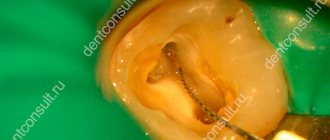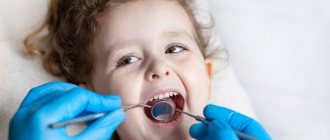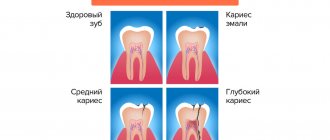An x-ray is the dentist’s main tool in making the correct diagnosis. However, a conventional orthopantomogram or targeted photograph has limited diagnostic potential and does not provide complete data on the condition of the teeth and maxillofacial area. But technologies are constantly being modernized and today, more informative technology has come to the aid of conventional radiography - dental computed tomography (CT).
What does a 3D dental x-ray show?
3D dental tomography is a highly accurate diagnostic method that makes it possible to obtain a three-dimensional image of the dental system in different projections. Volumetric images obtained with CT allow the specialist to enlarge, rotate and examine the area of interest from all sides and at different depths:
- The entire maxillofacial apparatus.
- A dentition or an individual tooth.
- Paranasal sinuses.
- Bone and periodontal tissues.
Dental CT allows you to detect inflammation, assess the homogeneity of the filling material and check the quality of installation of a filling, crown or implant, see the number of dental roots and their fragments, identify neoplasms, assess the degree of curvature of teeth, determine the exact parameters of bone tissue (height, width, density, etc.). d.). The information obtained allows the doctor to optimize treatment measures and predict the result.
Advantages of the “gold standard” diagnostics
Thanks to computed tomography, the doctor can examine all pathologies at the initial stage of their development, make a diagnosis and promptly prescribe the necessary treatment. When implanting teeth, three-dimensional images are indispensable; they allow you to choose the most suitable option. According to studies, osseointegration is successful in 98% of cases if a preliminary examination is carried out using a tomograph, and in 65% of cases the implants do not take root in the bone tissue due to the lack of CT images from doctors.
The main advantages of computed tomography include:
- Safety of the process - the patient receives a much lower radiation dose than with a regular X-ray (CT is allowed even for young children).
- The procedure is carried out very quickly (the session lasts from 8 seconds to 5 minutes).
- High accuracy of reproduction of the final result, which eliminates the need for the dentist to decipher images.
- Detailed information - the image shows both soft tissue and the smallest foci of inflammation.
- Clarity and contrast of the picture, allowing you to detect even the smallest nuances.
- The ability to study the surveyed area in three planes at once.
- Scaling of images, which allows you to repeatedly enlarge the desired area and view the desired area from all sides.
- Possibility to identify the location of dental nerves in relation to implants.
- Pictures can be copied or printed so that the client can review them.
Tomography is performed absolutely painlessly and comfortably for the patient. Depending on the modification of the equipment, during the examination he may be in a lying, sitting or standing position. The procedure does not require preliminary preparation - it can be completed at the first appointment, for example, when a person comes for an implantation consultation. You don't have to wait for your photos - they will be ready almost immediately.
For a dentist, CT also provides additional advantages: he can determine the treatment method and surgical plan on a 3D model, test its effectiveness, and eliminate possible errors. This will make it possible to see how the dentition will look after correcting the problem.
Why are dental x-rays prescribed?
A 3D photograph of teeth is performed if the following indications exist:
- Injuries of the maxillofacial area.
- Preparation for endodontic treatment (structure of root canals, pathological processes in the periodontium, degree of pulp damage, etc.).
- Diagnosis of neoplasms (cysts, abscesses, granulomas, tumors).
- Anomalies of development and deformation of the maxillofacial apparatus.
- Quality control of filling and implant installation.
- Planning of orthodontic treatment (identification of impacted and dystopic teeth, analysis of the condition of the tissues around each tooth, etc.).
- Detection of hidden periodontal cavities and pockets.
- Implantation planning (assessment of jaw bone parameters, indications for sinus lift or osteoplasty, modeling the result of implantation).
- Endogenous pathologies of the maxillary sinuses.
Three-dimensional x-ray examination is the gold standard when planning any complex dental procedure or surgery. CT allows you to quickly make an accurate diagnosis, competently plan treatment or dental prosthetics, and monitor the results.
Why do you need a CT scan for dental implantation?
In most cases, diagnosis using a tomograph is an alternative solution for the necessary pre- and postoperative studies. The procedure has no relative contraindications, so it can be performed for most patients. In addition, a small list of absolute contraindications significantly expands the possibilities of using the technique for most people of different ages.
Before implantation
The first CT scan of the jaw is prescribed before implantation. Preoperative tomography allows the dentist to assess:
- The absence, presence and degree of developed pathologies and inflammatory processes in the tissues of the oral cavity. Thanks to the results of CT at this stage, it is possible to identify real obstacles to the operation. Based on the conclusion, preliminary treatment may be required.
- The quality, condition, density and volume of bone tissue in the area where the artificial root will be installed. This will allow you to select the optimal protocol, as well as accurately determine the shape and size of the implant. In addition, the CT results will show whether there is a need to build up bone tissue or whether there is enough of it.
- Position of the mandibular nerve (for restoration of the lower row of teeth) and maxillary sinuses (if implantation of the upper row of teeth is required). Accurate information about these individual characteristics will help avoid injury during surgery.
- The exact location of the roots of the teeth, which are located near the place where the implant will be implanted. The data will allow the surgeon to take into account the anatomical features and not affect the natural roots when implanting artificial ones.
Please note that, in addition to the usual CT machine, we also use a 3Shape scanner for 3D diagnostics. Intraoral examination allows you to obtain accurate data right in the dentist's chair. The resulting data helps to create crowns with high precision that are placed on implants.
You might be interested in:
Computed tomography of teeth and jaws
Dental diagnostics
3D image of teeth
After implantation
Since a visual examination of the oral cavity is not enough to assess the success of the implantation of artificial roots, CT data are required for dental implantation. They allow:
- evaluate the overall result and confirm the success of the surgical operation (this is especially important for those cases where the operation itself was performed without a preliminary CT scan);
- confirm the quality of osseointegration (contact between the implant and living bone tissue) of the titanium artificial root in the jaw.
- determine the causes of pain, discomfort or instability of the structure after implantation.
In our clinics, dental implantation in St. Petersburg is carried out strictly after the necessary tomography studies.
What equipment is used
To carry out 3D diagnostics, a three-dimensional computed tomograph SOREDEX Scanora 3D with advanced functionality is used. This is the latest generation equipment, which allows you to obtain three-dimensional images of the anatomical structures of the maxillofacial region in a few seconds, with the least radiation exposure for the patient.
The program analyzes the obtained multiplanar sections and builds them into a 3D model, thanks to which the specialist is able to accurately assess the condition of the dental system, detect all pathological processes occurring in this area and competently plan a treatment regimen.
A virtual 3-dimensional model of the scanned area can be recorded on any digital media (CD, flash drive), which allows the attending physician, if necessary, to view diagnostic data or involve related specialists in the analysis of the received information.
Possible harm
Cone beam dental computed tomography is the safest and fastest diagnostic method. Thanks to the use of a conical X-ray beam, the radiation dose received during the study is 10 times less than when using spiral CT. And the pulsating mode of the X-ray beam further reduces the radiation dose. The three-dimensional computed tomograph SOREDEX Scanora 3D is one of the safest devices in terms of X-ray radiation dose - only 0.035 m3v.
However, despite the safety of the study, CT also has contraindications. If we just talk about dental tomography, it is not performed during pregnancy (in the 1st trimester). 3D dental x-rays with contrast are prohibited for pregnant and lactating women, patients with endocrine disorders (diabetes mellitus, thyroid pathologies), renal failure and intolerance to iodine-containing drugs.
Online consultation with a doctor
If you are concerned about the condition of your teeth. Painful sensations arise, gums bleed for a long time, and seals have appeared on the jaw. You are concerned about previously installed dental implants. And there was a need to take a 3D photo of the teeth. Then, after receiving three-dimensional visualization, it is better to go for an examination or consultation with a dentist to interpret the images and compare the results with your current complaints. It is impossible to independently understand the nuances of a 3D image, much less make a diagnosis. The specialist will explain the situation and give recommendations before the in-person appointment.
Computed tomography or panoramic image - differences and which is better for implantation
What is the difference between an orthopantomogram and a CT scan and which is better to choose? When it comes to preparing for implantation, a two-dimensional panoramic image alone is not enough. In order to thoroughly examine the condition of hard and soft tissues from all sides (and not just one) for the subsequent selection of implants and places for their implantation, you should also undergo computed tomography (CT). Only CT provides the most complete, detailed information about the quality and volume of the jaw bone. And here the diagnostic result will be three-dimensional, volumetric, and not “flat”. Single-stage implantation protocols place even higher demands on preliminary X-ray examination. But OPTG can also be useful for monitoring treatment results.
It is interesting that modern CT machines have such capabilities that they can be used to perform computed tomography, orthopantomograms, and targeted x-rays. The laboratory technician or doctor only needs to change the settings in the device.
CT and especially MSCT, in comparison with conventional OPTG, allows one to achieve the highest degree of detail in images, which means giving an accurate assessment of the quality and condition of bone tissue, guaranteeing the exclusion of possible contraindications, and selecting the optimal models of implants and places for their implantation.
Today, many modern dental clinics offer X-ray examination services, but if we are talking about implantation (especially of all teeth), then preference should be given to a specialized diagnostic center.
Advantages of the method
- The ability to rotate, enlarge, and examine images in any projection and section, which is impossible with conventional 2-dimensional scanning.
- The examination lasts only a few seconds (8-20 seconds).
- Complete diagnostic information.
- Maximum security.
- Digital information format.
- Detection of any pathological processes at an early stage.
- No prior preparation required.
- 3D reconstruction without distortion or artifacts.
- A wide range of purposes - from endodontic dental treatment and implantation to maxillofacial operations.
Is it possible to treat teeth during pregnancy?
Treatment of dental diseases can be conservative or surgical. Any of these types involves the use of anesthesia, antibiotics (not always), invasive intervention and x-rays. The vulnerability of the fetus during the formation of its organs has long been proven by scientists. Therefore, many pregnant women have a question: “Is it possible to treat teeth during this important period?” Obstetricians-gynecologists and dentists unanimously answer: “Yes, it is possible and necessary, but subject to certain restrictions.”
The need for treatment is justified by the fact that dental or periodontal disease is accompanied by an infectious process of varying severity. And this is very dangerous for the fetus, especially during the development of tissues and organs. Thus, researchers from the USA found that cariogenic bacteria can cause premature birth or low birth weight of a child. In addition, the adrenaline released when pain occurs is also extremely dangerous for the unborn baby. Therefore, pregnant women need to see a dentist not only when they experience toothache, but also for preventive examinations.
Dental treatment during pregnancy is a set of preventive and therapeutic measures aimed at preventing dental diseases or eliminating pathological processes that have already begun. It is especially important for pregnant women to consult a dentist when the first symptoms of a problem appear. This will help cure the disease without the use of potent drugs and, possibly, without X-ray diagnostics. Surgical treatment is permitted if there are emergency indications.
Is there an alternative to CT
There are many other diagnostic imaging methods (x-ray, orthopantomogram, ultrasound, etc.), but only CT provides the possibility of highly accurate, separate images of all types of tissue at different angles and to different depths. Although a panoramic dental photograph remains an equally important diagnostic tool for a dentist today, it can only provide a general overview. In turn, a 3D tomogram allows you to obtain not a single flat image of the jaw, but a whole series of sequential multiplanar images in different projections and without the distortions inherent in a panoramic image.
Example:
due to the different density of bone structures exposed to X-ray radiation, it is impossible to see less dense bone in a 2-dimensional image; accurate information is provided by a 3- D image of the teeth.
How does the procedure and decoding work?
To take a 3D photograph of teeth, a standing or sitting patient needs to bite a special plate and fix his position in the device using a fixing stand. During the entire scanning time, you must remain absolutely still.
The tomograph sensor makes a series of revolutions around the patient’s head for 8-20 seconds, producing about 200 images in different projections. Processing digital data takes 5-15 minutes, after which the information is written to a disk or flash drive. No preparation is required, you just need to remove all metal jewelry from your neck, ears, and hair before the procedure.











